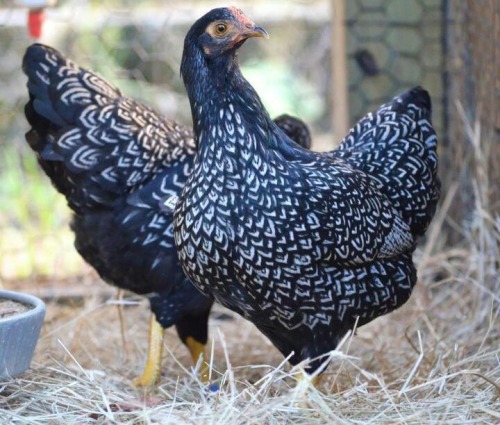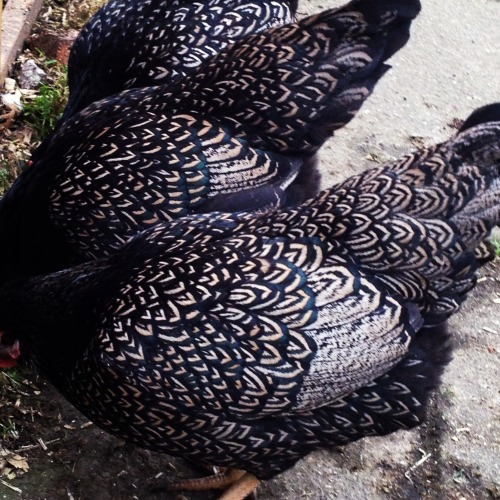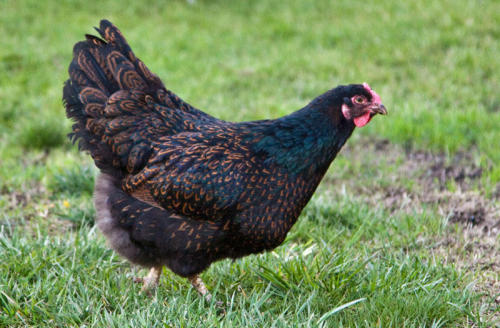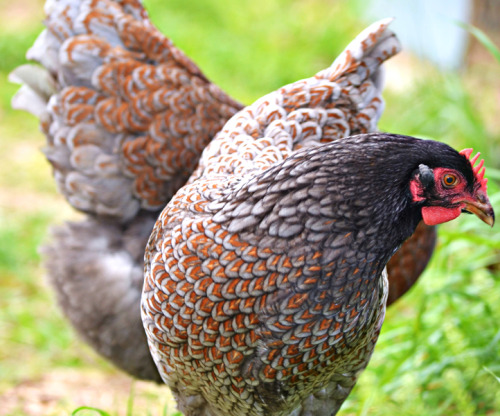I Can Feel…the Serotonin And Dopamine Dropping…i Need To Make…Crafts
I can feel…the serotonin and dopamine dropping…i need to make…Crafts
i must make…
b e a d l i z a r d

More Posts from Thejunkdrawers and Others
guys listen
mermaids would have to be dark-skinned and chubby to survive in the ocean
water isnt a great means of protecting oneself from the sun theyd have to be very dark if they were shallow mermaids and they didnt want to be constantly sunburnt and they may be paler if they lived deeper in the water but theyd have to be buff and/or chubby as hell to resist the water pressure and cold of the deep sea
what im saying is pale-ass white skinny mermaids are just unrealistic
yknow 1 of the little things i appreciate about kid icarus is how realistically pit’s outfit accommodates his wings
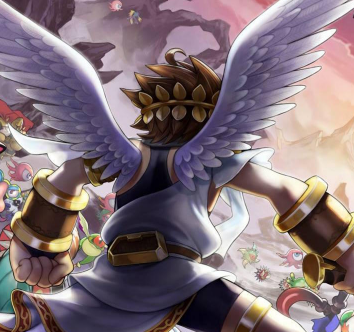
Social Insects in Science Fiction
Hello, my name is Poetry, and I love social insects. Whether they’re ants, bees, termites, wasps, aphids, thrips, or ambrosia beetles, I find them fascinating to learn about. But if the sci-fi books I read as a kid had had their way, I should have run screaming from every ant colony I saw.
From the buggers in Ender’s Game to the Borg in Star Trek to the Vord in Codex Alera to ants and termites themselves from a morph’s-eye view in Animorphs, social insects, and the aliens or artificial intelligences that closely resemble them, are portrayed as “hive minds” with an emotional tone of existential terror. And I’m here to tell you that these portrayals are totally unfair.
What they get right
Here are some features that most portrayals of social insects and their analogues in sci-fi get right. Yes, social insect colonies have queens that are primarily responsible for reproduction. Yes, social insects have very different sensory modalities from ours. We primarily use sight and sound to communicate and navigate the world, while social insects use taste and smell and vibration. Yes, social insects have specialized division of labor to particular tasks, and yes, they are willing to sacrifice themselves in droves to protect the colony. And sometimes, they will enslave social insects from other colonies or even species to serve their own ends (x).
Thus ends what sci-fi portrayals get right.
What they get wrong: Queens
Almost universally in sci-fi, when you kill the queen, the hive disintegrates into chaos. You’ve cut off the head! The central intelligence of the hive is gone! They’re just mindless borg-units with no idea what to do!
Indeed, in some social insects, such as leafcutter ants, if you kill the queen, the whole colony will die – but probably not for the reasons you think. However, it’s more common for social insects to be able to carry on just fine regardless. In most ants and bees, there are “backup” queens that are reared up by the workers in case the current queen should die. And in many social insects, a worker can step up and become a queen in her place. (Hilariously, a worker ant that steps up to reproduce in place of a queen ant is called a gamergate.)
But here is the most important problem with the sci-fi trope of killing the queen to kill the hive. The queen is not the brain of the hive. She is the ovary.
If you think of a social insect colony as a superorganism, which it’s useful to do in many cases, different groups of insects within the colony act like organs. One caste protects the colony from invaders, which is like an immune system. One caste scouts for new places to forage, which is like a sensory system. Generally, science fiction has a good grip on this idea. Where sci-fi authors fail is that they think the queen is the brain of this superorganism. She is not. She is the reproductive system. The queen does not control what happens in the hive any more than your reproductive system controls what happens in your body. (Which is to say, she has some influence, but she is not the brains of the operation.)
The reason why leafcutter ant colonies die when the queen dies is because the colony has been castrated, not beheaded. Most animals die when they are no longer able to reproduce, even if their brains are still perfectly functional. For castrated colonies with no backup queen or gamergate and no hope of getting one, there is no point in carrying on. Their evolutionary line has ended.
What they get wrong: Swarm intelligence
Here is how social insect hive minds work in science fiction: the queen does the thinking, and the rest of the hive goes along with whatever she thinks.
Now, I’ve already told you that the queen is not the brain of the hive. So where is the brain? Well, that is exactly the point of swarm intelligence. The brain does not reside in one particular animal. It’s an emergent property of many animals working together. A colony is not like your body, where your brain sends an impulse to your mouth telling it to move, and it moves. It’s more like when two big groups of people are walking toward each other, and they spontaneously organize themselves into lanes so no one has a collision (x). There’s no leader telling them to do that, but they do it anyway.
Much of the efficiency of social insect colonies comes from very simple behavioral rules (x). Hymenopterans, the group of insects that includes ants, bees, and wasps, have a behavioral rule: work on a task until it is completed, and when it is done, switch to a different task. If you force solitary bees (yes, most bee species are solitary) to live together, they will automatically arrange themselves into castes, because when one bee sees another bee doing a task like building the nest, its behavioral rule tells it that the task is completed and it needs to switch to a different task, like looking for food.
Individually, a social insect isn’t all that smart, whether it’s a queen, worker, soldier, or drone. But collectively, social insects can do incredibly smart things, like find the most efficient route from the colony to some food (x), or choose the perfect spot to build their hive (x).
What they get wrong: Individuality
The existential terror of the hive mind in science fiction comes from the loss of the self. The idea is that in a social insect colony, there is no individual, but one whole, united to one purpose. No dissent, disagreement, or conflicting interests occur, just total lockstep. I totally get why that’s scary.
The thing is, it’s just not true of real social insects. There is conflict within colonies all the time, up to and including civil war.
A common source of conflict within colonies is worker reproduction. Yes, in most social insects, workers can in fact reproduce, though usually they can only produce males. So why don’t they? Because it’s not in the interest of their fellow workers. Workers are more closely related to their siblings and half-siblings produced by the queen than they are to their nephews, so they pass on more of their genes if they spend resources on raising the queen’s eggs. So, if a worker catches its fellow laying an egg, it will eat the egg. Not exactly “all for one and one for all,” is it?
Worker insects may also fight in wars of succession. If there is more than one queen in a species where queens do not tolerate each other (yes, there are species where multiple queens get along together just fine), such as monogynous fire ants, the workers will ally themselves with one queen or another and engage in very deadly civil war.
Finally, in some species, the queen needs to bully the workers into doing their jobs, and the dominant workers need to bully subordinate workers into doing their jobs (x). Yes, sometimes workers try to laze around and mooch.
Surprisingly human
Here’s what I find weird about depictions of social insects in science fiction. They are portrayed as utterly alien, Other, and horrifying. Yet humans and social insects are very, very similar. The famous sociobiologists E.O. Wilson and Bernard Crespi have both described humans as chimpanzees that took on the lifestyle of ants.
I think what fascinates people, including me, about ants, bees, and their ilk is that you watch, say, a hundred ants working together to tear up a leaf into tiny bits and carry it back to their colony, or a hundred bees all appearing out of seemingly nowhere to sacrifice themselves en masse to stop a bear from eating their hive, and it looks like magic. It really does look like some kind of overmind is controlling their collective actions.
But imagine you’re an alien who comes to Earth, and you know nothing about humans or the way we communicate. Wouldn’t we look exactly the same to them as ants and bees look to us? Wouldn’t they look at us sacrificing our lives by the thousands in wars, or working together to build cities from nothing, and think, Wow, how do they coordinate themselves in such huge numbers, why do they give up their lives to defend their borderlines, I guess there must be some kind of mega-brain they all share that tells them what to do, and they just march in lockstep and do it.
If there’s anything I’ve learned from the study of both social insects and humans, it’s that any system that looks monolithic and simple from a distance is in fact fractured, messy, and complicated when you look at it up close.
Social insects aren’t scary mindless robot-aliens. They’re a lot like you and me. As much as I was terrified as a kid by the Animorphs book where an ant morphs into Cassie and screams in pure existential horror at its sudden individuality, I actually think an ant would adjust very easily to being a human, and that a human would adjust very easily to being an ant – much more easily, in fact, than humans adjusted to morphing, say, sharks, in the very same book series.
• An Oxford comma walks into a bar, where it spends the evening watching the television, getting drunk, and smoking cigars.
• A dangling participle walks into a bar. Enjoying a cocktail and chatting with the bartender, the evening passes pleasantly.
• A bar was walked into by the passive voice.
• An oxymoron walked into a bar, and the silence was deafening.
• Two quotation marks walk into a “bar.”
• A malapropism walks into a bar, looking for all intensive purposes like a wolf in cheap clothing, muttering epitaphs and casting dispersions on his magnificent other, who takes him for granite.
• Hyperbole totally rips into this insane bar and absolutely destroys everything.
• A question mark walks into a bar?
• A non sequitur walks into a bar. In a strong wind, even turkeys can fly.
• Papyrus and Comic Sans walk into a bar. The bartender says, "Get out -- we don't serve your type."
• A mixed metaphor walks into a bar, seeing the handwriting on the wall but hoping to nip it in the bud.
• A comma splice walks into a bar, it has a drink and then leaves.
• Three intransitive verbs walk into a bar. They sit. They converse. They depart.
• A synonym strolls into a tavern.
• At the end of the day, a cliché walks into a bar -- fresh as a daisy, cute as a button, and sharp as a tack.
• A run-on sentence walks into a bar it starts flirting. With a cute little sentence fragment.
• Falling slowly, softly falling, the chiasmus collapses to the bar floor.
• A figure of speech literally walks into a bar and ends up getting figuratively hammered.
• An allusion walks into a bar, despite the fact that alcohol is its Achilles heel.
• The subjunctive would have walked into a bar, had it only known.
• A misplaced modifier walks into a bar owned by a man with a glass eye named Ralph.
• The past, present, and future walked into a bar. It was tense.
• A dyslexic walks into a bra.
• A verb walks into a bar, sees a beautiful noun, and suggests they conjugate. The noun declines.
• A simile walks into a bar, as parched as a desert.
• A gerund and an infinitive walk into a bar, drinking to forget.
• A hyphenated word and a non-hyphenated word walk into a bar and the bartender nearly chokes on the irony
- Jill Thomas Doyle
Chai tea bag + lil but of brown sugar + apple cider packet + 16 oz. mug of hot but not quite boiling water
it will not Fix You but like. maybe. maybe.
Let’s talk about Nightjars
they are these wonderful tiny predatory birds

With great camouflage for multiple environments


And lovely plumage dependent on their species




BUT BEST OF ALL IS THEIR MOUTHS, which look small then their beaks are closed (they’ve even got cute lil’ whiskers!)

BUT ARE ACTUALLY HUUUUGE
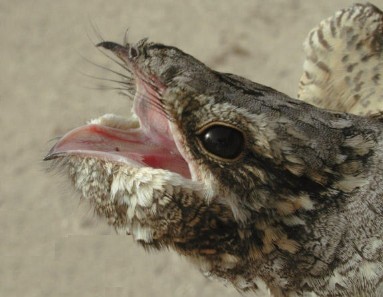


BEST BIRD
Dazed in Space is a wonderful 80’s Sci-Fi adventure where three kids get lost in a weird dimension!
Read More & Play The Beta Demo, Free (Windows)
Gameplay Video:
All you need in life is a color picker willing to expose you to the unbounded madness we call color vision.

me, absolutely clueless: "I want a color just like this one, but in red" color picker: Fuck you think you are, a Mantis Shrimp? Don't talk to me again until you can afford a wide gamut monitor.

-
 doctorcupcake12 reblogged this · 3 weeks ago
doctorcupcake12 reblogged this · 3 weeks ago -
 doctorcupcake12 liked this · 3 weeks ago
doctorcupcake12 liked this · 3 weeks ago -
 dragonbleps reblogged this · 3 weeks ago
dragonbleps reblogged this · 3 weeks ago -
 noodledragonsoup reblogged this · 3 weeks ago
noodledragonsoup reblogged this · 3 weeks ago -
 butterflybiitez liked this · 3 weeks ago
butterflybiitez liked this · 3 weeks ago -
 swiftadrift reblogged this · 3 weeks ago
swiftadrift reblogged this · 3 weeks ago -
 thesoldierthemanoutoftime reblogged this · 3 weeks ago
thesoldierthemanoutoftime reblogged this · 3 weeks ago -
 thesoldierthemanoutoftime liked this · 3 weeks ago
thesoldierthemanoutoftime liked this · 3 weeks ago -
 scorchingskys liked this · 3 weeks ago
scorchingskys liked this · 3 weeks ago -
 leonineskies reblogged this · 3 weeks ago
leonineskies reblogged this · 3 weeks ago -
 rhaellahn reblogged this · 3 weeks ago
rhaellahn reblogged this · 3 weeks ago -
 rhaellahn liked this · 3 weeks ago
rhaellahn liked this · 3 weeks ago -
 aelfsigur liked this · 3 weeks ago
aelfsigur liked this · 3 weeks ago -
 rustcohle liked this · 3 weeks ago
rustcohle liked this · 3 weeks ago -
 essektheylyss liked this · 3 weeks ago
essektheylyss liked this · 3 weeks ago -
 laurlark liked this · 3 weeks ago
laurlark liked this · 3 weeks ago -
 alchemyassist liked this · 3 weeks ago
alchemyassist liked this · 3 weeks ago -
 nevaehs liked this · 3 weeks ago
nevaehs liked this · 3 weeks ago -
 tammyquest liked this · 3 weeks ago
tammyquest liked this · 3 weeks ago -
 twinbrujahs reblogged this · 3 weeks ago
twinbrujahs reblogged this · 3 weeks ago -
 twinbrujahs liked this · 3 weeks ago
twinbrujahs liked this · 3 weeks ago -
 evolutionsbedingt reblogged this · 3 weeks ago
evolutionsbedingt reblogged this · 3 weeks ago -
 march17 reblogged this · 3 weeks ago
march17 reblogged this · 3 weeks ago -
 prettypangolins reblogged this · 3 weeks ago
prettypangolins reblogged this · 3 weeks ago -
 epaily reblogged this · 3 weeks ago
epaily reblogged this · 3 weeks ago -
 rolypolypizza reblogged this · 3 weeks ago
rolypolypizza reblogged this · 3 weeks ago -
 maelstormfishcakes reblogged this · 3 weeks ago
maelstormfishcakes reblogged this · 3 weeks ago -
 ahumansvoid reblogged this · 3 weeks ago
ahumansvoid reblogged this · 3 weeks ago -
 ahumansvoid liked this · 3 weeks ago
ahumansvoid liked this · 3 weeks ago -
 m-has-a-blog reblogged this · 3 weeks ago
m-has-a-blog reblogged this · 3 weeks ago -
 wyrmtooth liked this · 3 weeks ago
wyrmtooth liked this · 3 weeks ago -
 the-law-of-progress reblogged this · 3 weeks ago
the-law-of-progress reblogged this · 3 weeks ago -
 aquastranger reblogged this · 3 weeks ago
aquastranger reblogged this · 3 weeks ago -
 lesleymanville liked this · 3 weeks ago
lesleymanville liked this · 3 weeks ago -
 lousybren reblogged this · 3 weeks ago
lousybren reblogged this · 3 weeks ago -
 soyala04 reblogged this · 3 weeks ago
soyala04 reblogged this · 3 weeks ago -
 seppin liked this · 3 weeks ago
seppin liked this · 3 weeks ago -
 stillnotabroad reblogged this · 3 weeks ago
stillnotabroad reblogged this · 3 weeks ago -
 stillnotabroad liked this · 3 weeks ago
stillnotabroad liked this · 3 weeks ago -
 hrmphfft liked this · 3 weeks ago
hrmphfft liked this · 3 weeks ago -
 sepulchrorum reblogged this · 3 weeks ago
sepulchrorum reblogged this · 3 weeks ago -
 sepulchrorum liked this · 3 weeks ago
sepulchrorum liked this · 3 weeks ago -
 old-flappingduster liked this · 3 weeks ago
old-flappingduster liked this · 3 weeks ago -
 roncheg liked this · 3 weeks ago
roncheg liked this · 3 weeks ago -
 aboxthecolourofheartache reblogged this · 3 weeks ago
aboxthecolourofheartache reblogged this · 3 weeks ago -
 fredthedemonpartner reblogged this · 4 weeks ago
fredthedemonpartner reblogged this · 4 weeks ago -
 kitkatthekitkatkat liked this · 4 weeks ago
kitkatthekitkatkat liked this · 4 weeks ago -
 royalarchive2 reblogged this · 4 weeks ago
royalarchive2 reblogged this · 4 weeks ago -
 anxiousmercy reblogged this · 4 weeks ago
anxiousmercy reblogged this · 4 weeks ago

A side blog where I'll *try* to keep things organised.yeahthatsnotgoingtolastlong
241 posts

